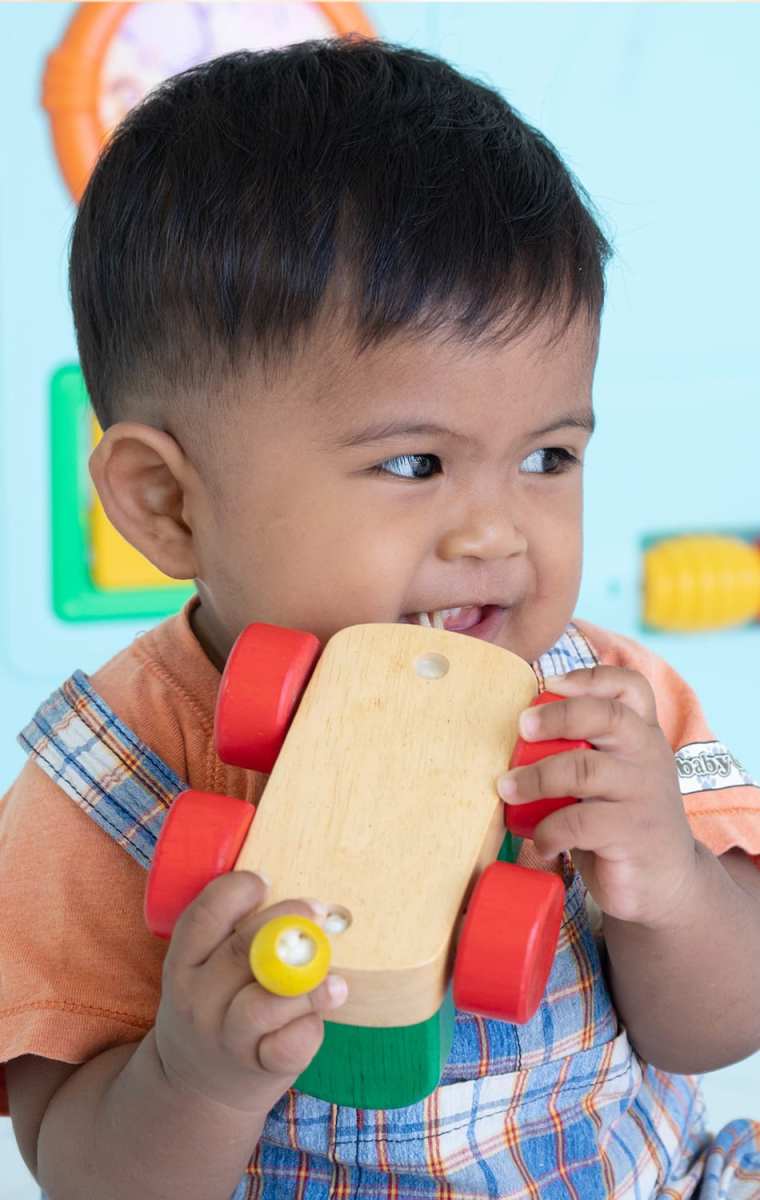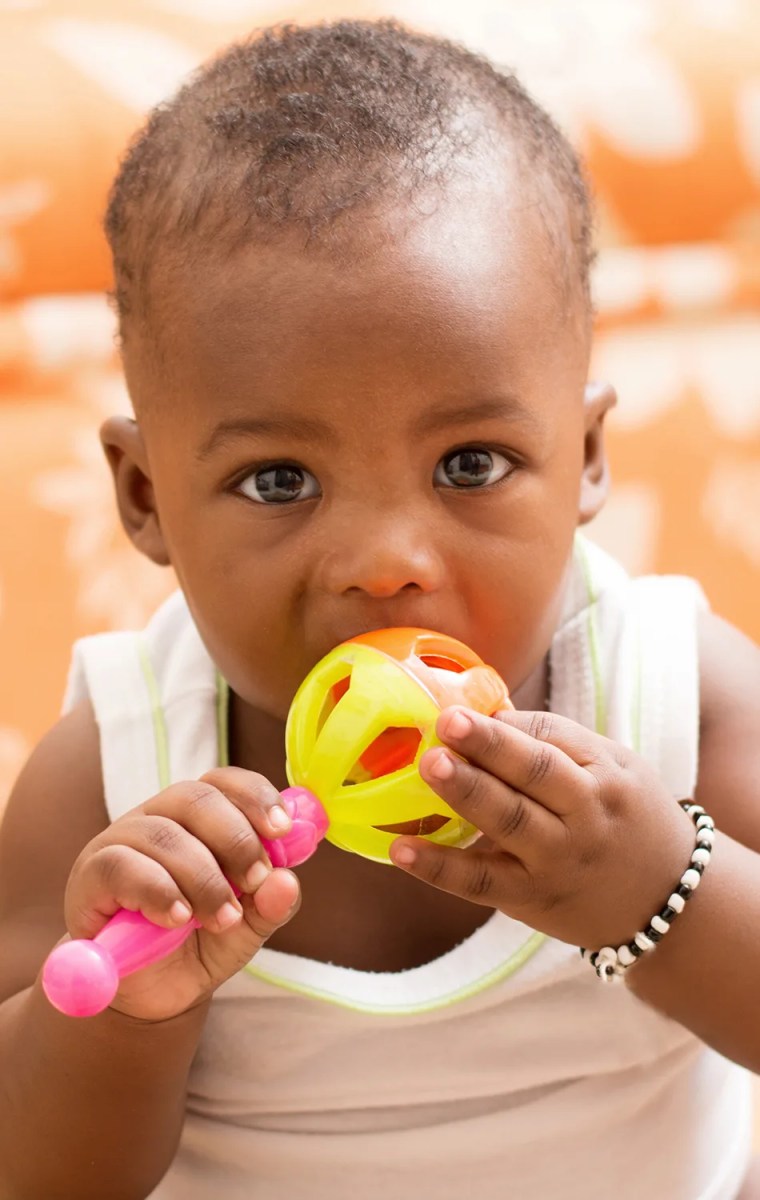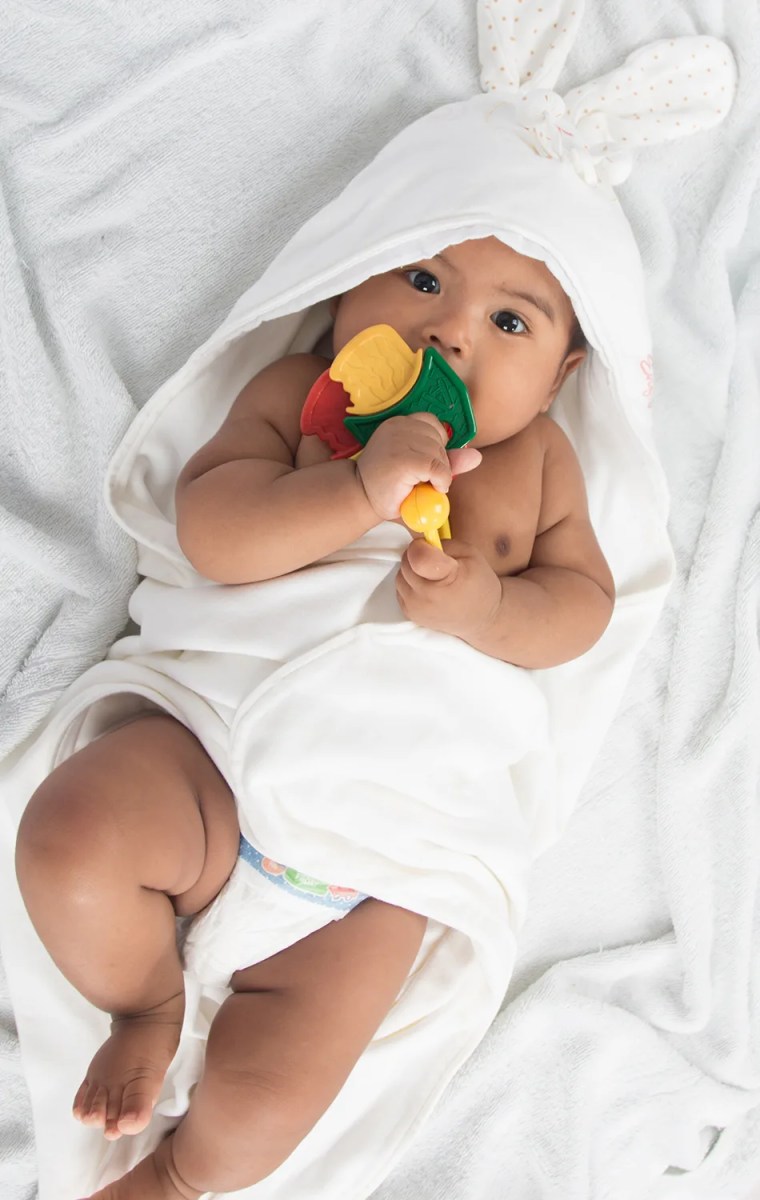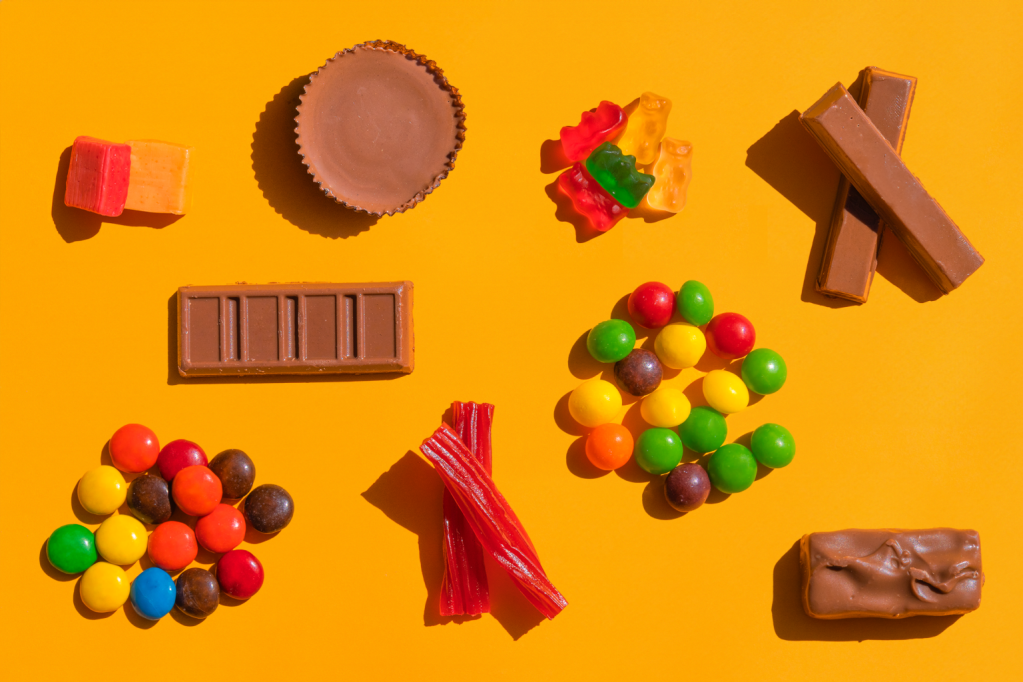Here’s What You Need To Know:
- At five months old your baby is starting to sit up, move, and roll.
- Your baby wants to put EVERYTHING into their mouth. They do this to construct an abstract idea of what an object might look like.
- Your little one is showing more emotion as their brain’s basal ganglia matures.
- The world is coming into focus for your little one with vision as strong as 20/25.
- Your babe can now distinguish pastel colors.
- They should sleep around 15 hours per day, including nap times.
Biting All The Blocks
Now that your baby is 5-months old, they have the motor skills to complete simple actions, such as picking objects up. They also want to put EVERYTHING into their mouth. Your baby does this to construct an abstract idea of what an object might look like.
Babies establish touch-sensitivity in a head-to-toe sequence, meaning that their touch sensitivity is established in their mouths prior to their hands. With new movement come new questions and new worries. We’re here to ease this transition for you and your babe.




1. Your Baby’s Brain
During the first 1,000 days of life, your baby’s brain is growing faster than it ever will. Before the age of 2, 80% of their brain will have developed. Additionally, 60% of your baby’s caloric intake is going straight to their brain. In short: it’s called brain food for a reason.
At 5 months, your baby is showing more emotion as their brain’s basal ganglia matures. Their emotions range from sad to content to outright joyous. They’re also paying more attention to the facial expressions of others. For example, between 5 to 7 months, babies will recognize fearful faces.
2. Your Baby’s Eyes
At birth, your baby’s vision is blurry and gray-scale. A baby’s newborn vision is somewhere between 20/200 and 20/400. But by the five-month mark, the world is coming into focus and their vision may be as strong as 20/25.
Your babe can now distinguish pastel colors. By the end of the 5 month mark, your babe will have developed all their primary visual capabilities like depth perception, color vision, fine acuity, and well-controlled eye movements. (The eye-rolling starts early.)
You’ll notice your child fixating on visually stimulating objects, such as a complex pattern, a mosaic, or even their own reflection. They are also adept at recognizing faces.
3. Your Baby’s Sleep:
Your baby should sleep around 15 hours per day, including nap times. On average, if your baby naps for around 4 hours per day, then they should be clocking 10-11 hours of sleep at night. Some babies — though not all — will be able to sleep through the night. Hunger — or a lack of it — usually determines when a baby wakes or sleeps.
Now is a great time to establish a bedtime routine. Make sure your baby is well-fed before bed, so hunger doesn’t interrupt their sleep. The fuller they are at bedtime, the more likely they are to sleep through the night.
4. Your Baby’s Tummy:
Your baby is a month away from starting solid food. They are developing the coordination to move solid food from the front of the mouth to the back for swallowing.
Five Month Milestones:
• Rolls over from front to back, but rarely back to front
• Sits with support of a pillow or “Boppy”
• Scrunching, crunching, and wobbling to find stability
• More aware of their hands, might get a little grabby
• Babbling is happening, oohs and gaa-gaahhhs to get your attention

Summary
As your baby begins to show more emotions, it becomes especially important that you interact with your baby as much as possible.
Have conversations with them, play games with them, and read them books. This is a beautiful time, so enjoy every second of it!











